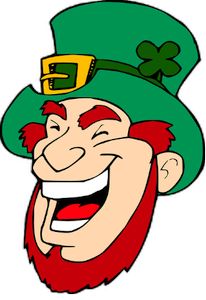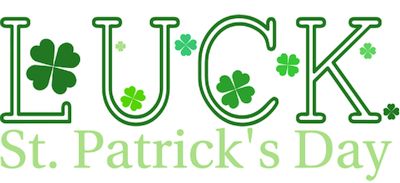 On March 17, one of the most popular and joyful festivals will be celebrated all over the world – the Feast of St. Patrick, the patron saint of Ireland. Before joining in the festivities and in order to grasp their true meaning, let us find out why St. Patrick is such a significant part of the Irish culture.
On March 17, one of the most popular and joyful festivals will be celebrated all over the world – the Feast of St. Patrick, the patron saint of Ireland. Before joining in the festivities and in order to grasp their true meaning, let us find out why St. Patrick is such a significant part of the Irish culture.
 On March 17, one of the most popular and joyful festivals will be celebrated all over the world – the Feast of St. Patrick, the patron saint of Ireland. Before joining in the festivities and in order to grasp their true meaning, let us find out why St. Patrick is such a significant part of the Irish culture.
On March 17, one of the most popular and joyful festivals will be celebrated all over the world – the Feast of St. Patrick, the patron saint of Ireland. Before joining in the festivities and in order to grasp their true meaning, let us find out why St. Patrick is such a significant part of the Irish culture.
Patrick’s life
c. 387 – Patrick was born in Roman Britain (either Scotland or Wales) to Roman parents. His birth name was Maewyn Succat. Although his father was a deacon, Patrick was not a believer.
c. 403 – When Patrick was about 16 years old, he was kidnapped by Irish pirates and sent to Ireland as a slave. He worked as a sheep herder on Slemish mountain in County Antrim for about six years. He came to believe that it was a punishment for his lack of faith, so he turned to religion.
c. 409 – Patrick escaped as a stowaway on a boat bound for Britain, where he reunited with his family. A free man, he decided to follow his vocation and became a priest, under the guidance of the missionary St. Germain.
c. 431 – Pope St. Celestine I appointed St. Patrick Bishop of the Irish and sent him as a missionary to Ireland, where Christians were only a small minority. He spent the rest of his life travelling throughout Ireland where he preached, performed baptisms, and founded churches and monasteries. It is said that he baptised many thousands of Irish people.
c. 461 (March 17) – St. Patrick died in Saul, Ireland, where he had built the first Irish church.
Patrick’s mission
It is said that Patrick found his true vocation after being kidnapped and brought to Ireland as a slave, which he believed was his punishment, or rather a test of faith. His faith grew stronger every day. In his memoirs, the Confessio, St. Patrick wrote:
„The love of God and his fear grew in me more and more, as did the faith, and my soul was rosed, so that, in a single day, I have said as many as a hundred prayers and in the night, nearly the same. I prayed in the woods and on the mountain, even before dawn. I felt no hurt from the snow or ice or rain.”
In his work, he also described a vision he had one night, when he was already a free man back in Britain. In that vision, he was named “the Voice of the Irish” and called to return to Ireland with his mission. He claimed to have been summoned by the following words:
„We beg you, holy youth, that you shall come and shall walk again among us.”
And so he returned to Ireland, where he spent the rest of his life converting the Irish to Christianity. It was not an easy task, however, as his teachings stood in opposition to the predominant, nature-oriented druidic religion of the 5th century Ireland. As we know today, it did not stop him from his mission.
Much of his life and missionary work is known from two of his works that have survived: the Confessio, and the Letter to Coroticus.
 St. Patrick’s Day
St. Patrick’s Day
St. Patrick’s Day, also known as St. Paddy’s Day (not Patty’s!), is celebrated every year on March 17, the presumed day of his death. It is undoubtedly one of the most popular and festive celebrations in the world, of both cultural and religious character. It has become a global festival involving parades, dancing, and a whole lot of cheer… and green.
It is worth mentioning that the first St. Patrick’s Day parade did not take place in Dublin, or anywhere in Ireland, as one might expect. It was held in New York City in 1972.
One of the most powerful symbols of St. Patrick’s Day is the shamrock. It is believed that St. Patrick used a three-leaf clover in his teaching to explain the concept of the Holy Trinity. For many years, shamrock was used to commemorate the preaching of St. Patrick. The tradition eventually evolved into the practice of wearing as much green as possible on the day of the celebrations.
There are also other symbols often seen on that day. The Celtic cross, for instance, is believed to be a combination of the Christian cross and the sun cross created by St. Patrick to explain the importance of the cross to the pagan Irish. The harp, one of the oldest musical instruments, was used in Ireland for centuries. The leprechauns are mischievous magical creatures who grant wishes and reveal the location of hidden pots of gold to anyone who manages to trick or catch them.
Just like many other celebrations, St. Patrick’s Day also has its traditional dishes. These include: corned beef and cabbage, beef and Guinness pie, Irish cream chocolate mousse cake, Irish champ, Irish potato soup, and many others. On that day, nobody goes hungry… or thirsty – there’s Irish coffee, green beer and a wide selection of green cocktails.
Wherever you are and however you choose to celebrate…
… may the luck of the Irish be with you on St. Patrick’s Day!




